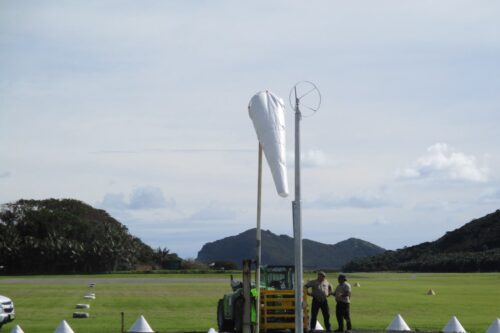If you are an avid sportsperson, you would have observed that the wind direction has a significant impact on your sporting activities. Many other fields, including aviation and weather, also benefit from tracking wind direction, but you require certain essential tools to achieve this. A windsock is a conical textile tube that resembles a giant sock. When mounted on a wind indicator pole, it does an incredible job of telling us the direction and speed of the wind. It is, in fact, a mandatory safety tool at commercial airports. This blog post explains how to understand wind direction and the role windsock and wind indicator poles play in determining wind direction.
How to understand wind direction
Wind is the movement of air. Wind direction is determined by where it is coming from, not where it is blowing towards. When a windsock is pointing to the east, it is an indication of a westerly wind. The direction is measured relative to true north (not magnetic north). True north is a fixed point on the earth’s globe, but the magnetic north is the direction a compass needle points to as it aligns with the earth’s magnetic field. A windsock can be used to read the direction of the wind and to estimate its speed.
How to read wind direction and speed
Wind direction
A windsock is a visual wind direction indicator that shows where the wind is blowing from. Wind enters a windsock through the end the wind is coming from and escapes via the other end. The windsock, therefore, points in the direction opposite to where the wind originates from.
Wind speed
When there is no wind or its speed is low, the windsock droops and deflates. If the wind is strong, the windsock flies horizontally. The speed of the wind can be estimated by the windsock’s angle in degrees, relative to the mounting pole.
Wind speed can also be estimated with the stripes on some of the windsocks. There are usually three bright red-orange stripes alternating with two white stripes. Each of the five stripes flying parallel to the ground adds three knots (5.6 Km/h) to the wind speed. For example, if only two of the five stripes fly parallel to the ground, this indicates a wind speed of six knots.
Applications of windsock and wind indicator poles
Aviation industry
Windsocks are invaluable, especially at commercial airports and airfields where they are lit at night, either by floodlights at the top or the lights surrounding them. If an aircraft is coming into an airport to land, it should be flying against the direction of the wind.
When the aircraft lands against wind direction, the pilot can quickly reduce the speed of the aircraft on the ground. This reduces the length of the runway that will be required for the aircraft to come to a stop. The pilot, therefore, requires knowledge of wind direction to navigate the aircraft so it can land safely.
Pilots also require wind direction and speed indicators for take-off, as varying wind speeds and directions may affect take-off, especially at airports located in places where mountainous regions surround valleys. Indicators are positioned in multiple locations at such airports. Hot-air balloonists and model aeroplane enthusiasts also need wind indicators to help them determine if flying conditions are safe.
Weather
Wind direction and speed are important for tracking and predicting weather patterns. Wind parameters influence evaporation rates and the mixing of surface waters, which have an impact on water levels and quality. They can also be used to predict the weather by determining the direction of movement of air depressions as well as the transfer of precipitations from one region to another.
Other uses
Aerial firefighters use wind direction indicators to determine if chemicals can be delivered safely and efficiently from their aircraft. Other places where wind direction indicators are used include vehicle racetracks, freeway bridges, farms, sports arenas and marine moorings.
Windsock and wind indicator pole designs
Windsock head frames and windsock designs
Windsocks are useful for determining wind direction and speed, but they must be engineered to meet Australian standards. In addition, to keep the tool responsive to wind direction and speed, they must be manufactured to ensure that they can resist becoming rigid in cold weather. G&S Industries supplies windsocks made from an extra heavy-duty fabric that is ultra-violet radiation stable. The head frames are manufactured from industrial-grade stainless steel, which incorporates a no-tangle, stand-off hoop.
Wind indicator pole designs
The wind indicator poles are manufactured to a heavy-duty standard so they can withstand extreme weather conditions. They are designed according to the Australian Civil Aviation Safety Authority (CASA) recommendations and meet the Australian Design Standards. They are base-plate mounted and supplied galvanised. They can also be powder-coated to make them available in a variety of colours.
Want to find out more? Chat to G&S Industries
Windsocks and windsock indicator poles are very vital in determining wind direction. G&S Industries is a fully West Australian owned company that has been supplying high-quality windsocks, head frames and wind indicator poles in Australia as well as internationally for more than 50 years. When planning your next project, get in touch with the G&S industries team to discuss your requirements.

